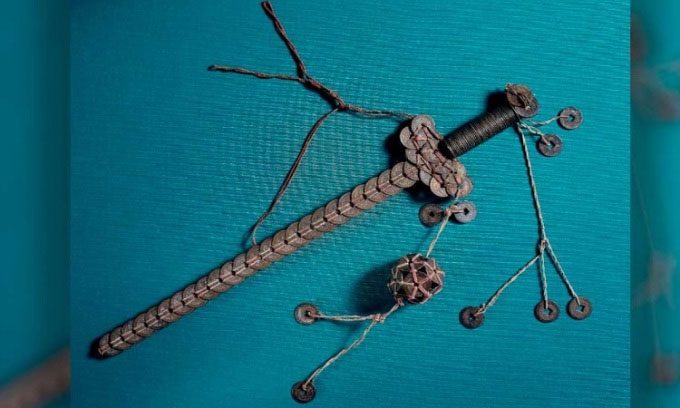Coin swords originated thousands of years ago, used for warding off evil spirits and in Taoist rituals, rather than for combat.
Coin swords were first crafted around the 24th to 26th centuries BC during the reign of the Yellow Emperor. By the 7th century BC, these swords were associated with the belief that they could drive away malevolent spirits. This type of sword became more popular after over a millennium, during the period of the Liu Song dynasty, and was often used in religious ceremonies.

A sword made from Chinese coins in the 19th century. (Photo: British Museum).
The coin sword is made from coins threaded onto an iron rod, forming a sturdy base. If the coins are too large, the craftsman may use two iron rods. The coins are then secured with a tightly bound cord. Every detail of the sword is significant, including its color. In most cases, the cords used to bind the coins are typically red or yellow, colors that symbolize royalty.
The coins are not chosen randomly but rather in specific quantities to facilitate easy replication. A typical coin sword will have a blade length equivalent to 18 coins, 10 coins for the hilt, 6 coins for the pommel, and 2 coins at the end of the grip. The sword must have a thickness of 3 coins in all areas to ensure its durability. This means at least 108 coins made of bronze alloy are needed to craft the sword.
On average, each sword is about 0.6 meters long and weighs between 0.45 to 0.9 kg. However, the weight can vary depending on the type of coins used and the size of the sword. Larger swords tend to be heavier and vice versa. Additionally, ancient Chinese beliefs hold that a sword is only effective if made from coins minted during the same emperor’s reign. Mixing coins from different dynasties is considered bad luck and may lead to a defective sword. Currently, some coin swords are preserved in museums around the world, such as the British Museum or the museum in Munich, Germany.


















































